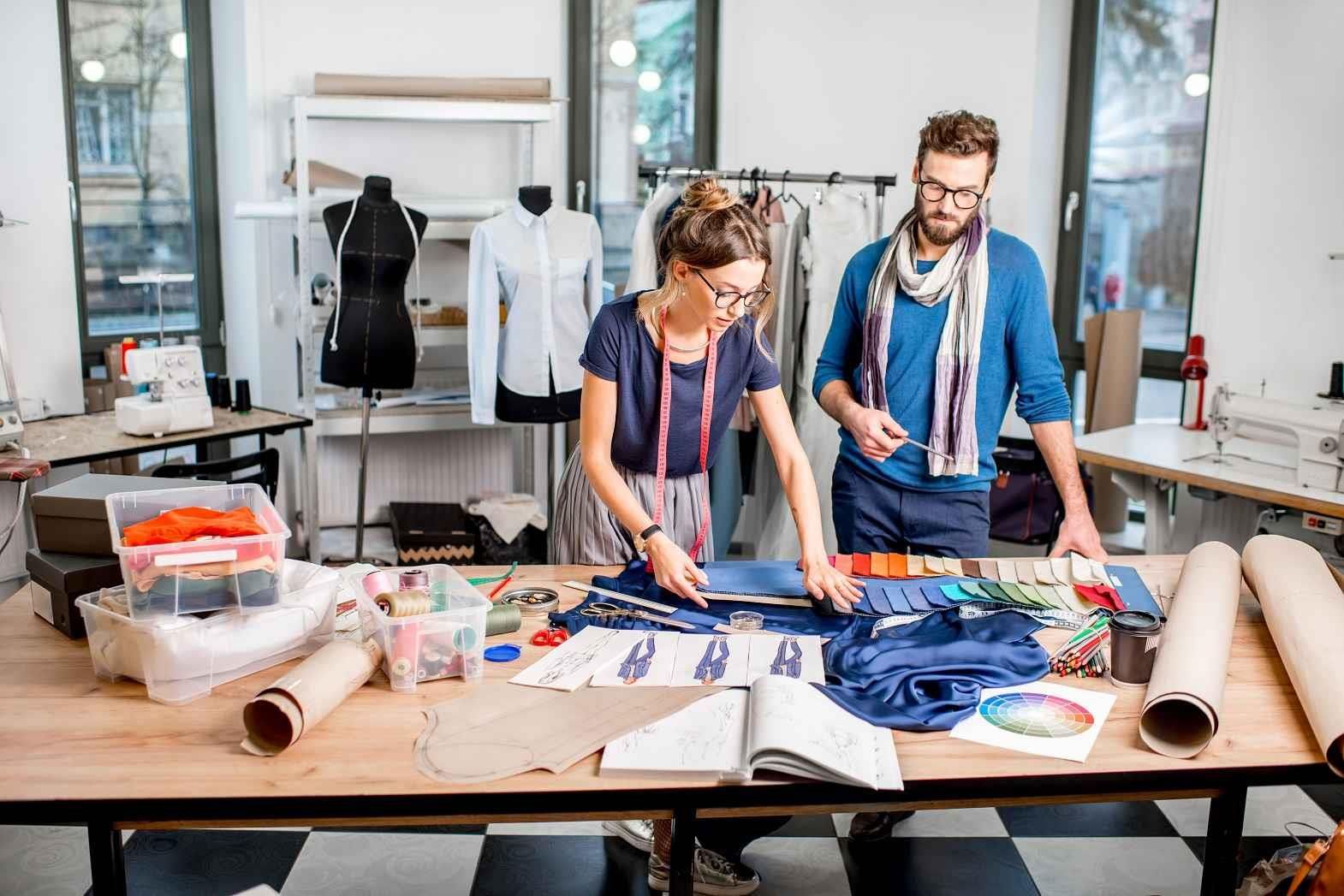1. Tailor's stitch
2. Designer's stitch
The bespoke method of tailoring is based on joining the two parts with plain seam and raw edges finished by three threads overlock machine. Whereas, from the designer's point of view, invisible seam lines tend to highlight the aesthetic appearance of the sewability by using the French seam, mock French seam, piped seam, feed off the arm machine seam, and sometimes use the five-thread overlock machine.
Fashionable garments are being made by couture sewing, and in the boutique, the fashion designers highly focus on fashion sewing techniques. To increase the price value of the garment, fashionable sewing or invisible sewing is incorporated. Branded garments are highly priced and are easily available. Customers are always attracted by designer collections of clothing. A tailor-stitched outfit fits fairly and looks okay.
From the below points, we can clearly differentiate between tailor stitch and designer's stitch garments and what each one focuses on.
|
Tailor's Stitch |
Designer's Stitch |
|
1.Inside garment shows the raw edges of the fabric (Due to poor and cheaper quality of fabrics)
2. Use of 2 ply thread for over lock stitch, 3 ply thread for general sewing and 4 ply thread for Denim/Drill cotton. Sewing ability, knowledge is fairly poor.
3. Neck line finishing normally has raw edges of fabric which are visible. Inside side parts of the dress usually have plain seam with 3 threads over lock stitch.
4. Wrinkles due to improper matching of the needle point, thread count number and usage of fabric knowledge is not up to the required standard.
5. Focuses on budget oriented and cheaper garments to meet the needs of masses.
6. Lesser importance is given to hand sewing work. Modern sewing machine usage is very rare.
7. Sewing defects like puckering, run off, seam grin, are commonly found. Due to local made machines and equipments that are normally used seam finishing concentration is poor.
8. Treadle machines are still in usage. Sometimes small power driven machines are used.
9. Use of raw materials like canvas, fusible interlining, lining, threads, needle, buttons, zippers, hook fasteners at budget oriented price or cheaper ones.
10. Seams and stitches are not up to the standard.
|
Work is done with utmost care, to meet the customer requirements by using good quality fabrics.
Sewing ability and knowledge is extremely good.
For neck line finishing piping seam is always used, sometimes fusible interlining is used and hemming hand sewing process is utilized.
Side parts of the dress are usually having trend scale, mock french seam is sewn, and sophisticated feed off the arm machine is used for by designers for sewing. Needle, thread, fabric relationship is commendable. Designers target high class customers for their high priced clothing. More importance is given to hand sewing work. Modern sewing machines are always used.
Designers give more importance to perfect fitting and designer stitch is flawless to increase the value of the garments.
Due to usage of high quality sewing machines and tools, seam finishing concentrations are good. Motorized power driven machines are always used to gain quantity oriented garments.
Use of raw materials like canvas, fusible interlining, lining, thread, needle, button, zippers, hook fasteners, velcro fasteners high priced and high quality materials are used. Seam strength is always of a high standard. Fusing machine is used to acquire good and elegant look. Steps are carefully taken to avoid sewing defects by experienced sewers. |
Currently, customers are very much particular about the garments they wear. They are very quality consciousness. Many customers ask their designer to tell them about fabric quality and the durability. Many latest accessories are launched and marketed in the fashion market. The fashion designers are well aware about the newly introduced accessories and trims.
They use these accessories in their clothing to enhance the quality of their garments. Even the raw materials like sewing thread, sewing needles, buttons, hook and fastener, press -stud buttons, zippers fasteners, Velcro, shoulder pads, fusible interlining, lining, canvas, are of the best quality. The usage of good quality of raw material, trims will increase the overall value of the garment.
Sewing defects like broken seams, skipped stitches, puckering seams and stitches, seam-grinning, runoff, not properly aligned stitches, uneven seams, needle-chew, broken buttons, improper usage of zippers, unaligned button and button-holes, improper hemming are considered to be the major defects. If fusible interlining is not ironed up to the heat level, air bubbles are caused on top of the collar portion after washing the garment.
Other sewing defects such as mismatched thread colour either inside or outside of the garment while stitching is not acceptable, improper stitches per inch causes more wrinkles on sewn portion. Fashion designers always focus on defect free garments to be supplied to their customers as customer satisfaction is the most important for them. Nowadays, fashion designers make such well designed, unique garments that customers appreciate their work and flaunt them at occasions and events.
References:
1. Fashion Mary G. Wolf
2. A guide to fashion sewing- Conne Amaden Crawford.







Comments